Assisting our Dynamic Wonders
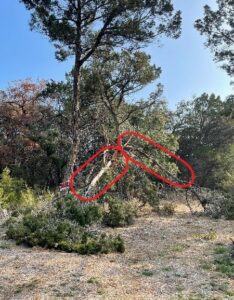
Figure 1 – Two side branches snapped near the trunk.
The tree damage from the recent ice storm continues to plague Travis County, fueled by several high wind events. Branches are now falling or hanging when they looked fine right after the storm. Our challenge now is to continue to survey and review our trees for pruning, signs of life, or terminal damage. Let’s look at several examples to acclimate to detecting damage and how best to address.
Mother Nature’s Stubs
In my last post (Trees CODIT for Ice Storm Aftermath), I discussed pruning techniques and emphasized not to leave stubs, as they increase the chance for decay in trees. Figures 1-3 depict how mother nature left a lot of our area trees with stubs, where branches broke due to the weight of ice. And now, we’re seeing more stub breaks as weakened branches are snapping in the wind. When this occurs, our best offense in ensuring a healthy tree is to eliminate the stub.
To prune, take the limb back to another limb (or trunk) that is at least 1/3 the size of the branch in question. This allows for the tree to use its natural defense walls and minimizes the wound recovery time. In Figure 1, with 2/3 of the main branches lost, it may be too catastrophic for the tree. For high-value trees it’s worth attempting to prune to determine if the main trunk can survive the ordeal.
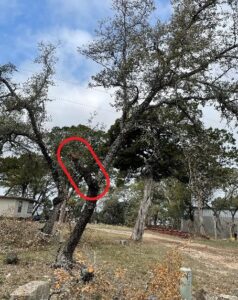
Figure 2 – One side branch snapped near the trunk.
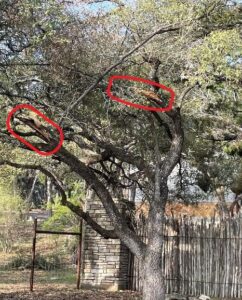
Figure 3 – Two side branches snapped, leaving stubs.
Mother Nature’s Strips – 3 Cut Method Mends
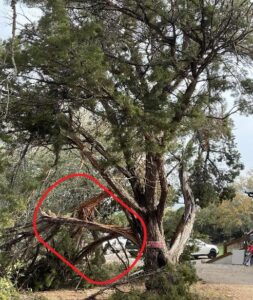
Figure 4 – Three major limbs stripped of bark.
Unfortunately, the storm damage included numerous stripping of branches in lieu of breaks. A strip creates an extremely large wound area and requires a longer recovery time, if ever. This type of wound breaches a tree’s defense mechanism and walls of defense. Tree variety and age will determine whether a tree can survive such a wound.
In Figure 4, three major limbs have stripped down and away from the main trunk. The trunk remains undamaged with a majority of limbs still healthy. The best pruning technique in this case is to remove the entire limb back to the trunk, using the 3-cut method. The same 3-cut method is used for the tree in Figure 5. A multi-trunk tree can survive losing a major trunk if removed down to the branch collar. In Figure 6, two limbs have stripped under the ice weight, but most of the tree remains.
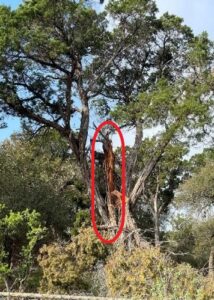
Figure 5 – Multi-trunk tree with bark stripped.
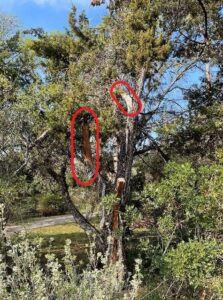
Figure 6 – Two limbs stripped of bark but rest of tree remains.
Large Limbs Need 3 Cuts
A 3-cut method of pruning the stripped limbs will eliminate the large surface area of damage, and help the tree recover more quickly. The key in pruning is to work with the tree’s natural defense mechanism and allow for the quickest recovery possible – especially before this summer’s heat materializes.
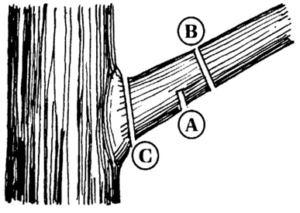
Figure 7 – Use the 3 cut method for heavy branches or stems.
Defend Now
While temperatures are mild and the weather forecast predicts wetter than normal patterns, it’s best to prune what’s possible now to begin the healing process. Trees will leverage the upcoming moisture to produce nutrients to assist with the healing process. We’d like to see at least ½ inch of rain per week to adequately water our Dynamic Wonders. If your area doesn’t see that level of moisture, begin watering now to assist the healing process. Also stay vigilant and remove damaged limbs as they occur.
Tree Trimming Reminders
- Make sure that you have the proper safety gear, including gloves, safety glasses, and a hard hat.
- Use sharp, clean pruning shears or a chainsaw to make clean cuts.
- After you have finished trimming any type of Oak tree variety, apply a tree wound dressing to the cuts to help protect the tree from infection, such as Oak Wilt.
- If you are not comfortable trimming a tree yourself, it is best to hire a professional arborist. An arborist will have the experience and training to trim your tree safely and effectively. Check here for the list of certified ISA arborists near you.
Additional Resources
Tree Information Center – City of Austin; https://www.austintexas.gov/department/tree-information-center
Texas Oak Wilt – Texas A&M Forest Service; https://texasoakwilt.org/
Trees and Tree Care – Texas A&M AgriLife Extension-Travis County; https://travis-tx.tamu.edu/about-2/horticulture/ornamental-plants/trees-and-tree-care/
Pruning Trees and Shrubs With a Purpose – Texas A&M AgriLife Extension-Travis County; https://travis-tx.tamu.edu/about-2/horticulture/ornamental-plants/pruning-trees-and-shrubs-with-a-purpose/
Tree Pruning Basics – Texas A&M AgriLife Extension-Travis County; https://travis-tx.tamu.edu/files/2022/10/Tree-Pruning.pdf
Find an Arborist – Texas Chapter of ISA
About Yvonne Schneider

Yvonne was a 35+year veteran in the computer and information technology industry when she retired and moved from Houston to the Austin area. In 2018, Yvonne certified as a Travis County Texas Master Gardener to follow her passion for gardening and volunteering within the community. She has spent 20+ years enjoying gardening and working with bulbs and perennials. She now tackles the challenges presented by the Austin area wildlife, drought, and limestone soil.

